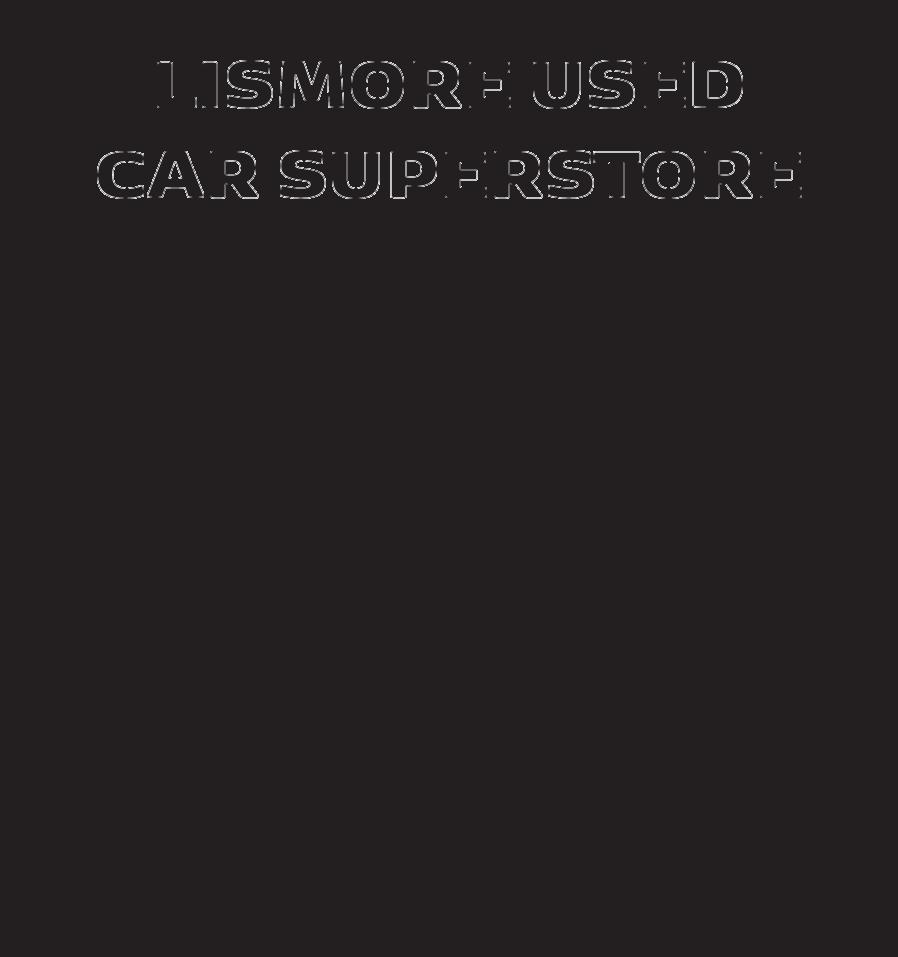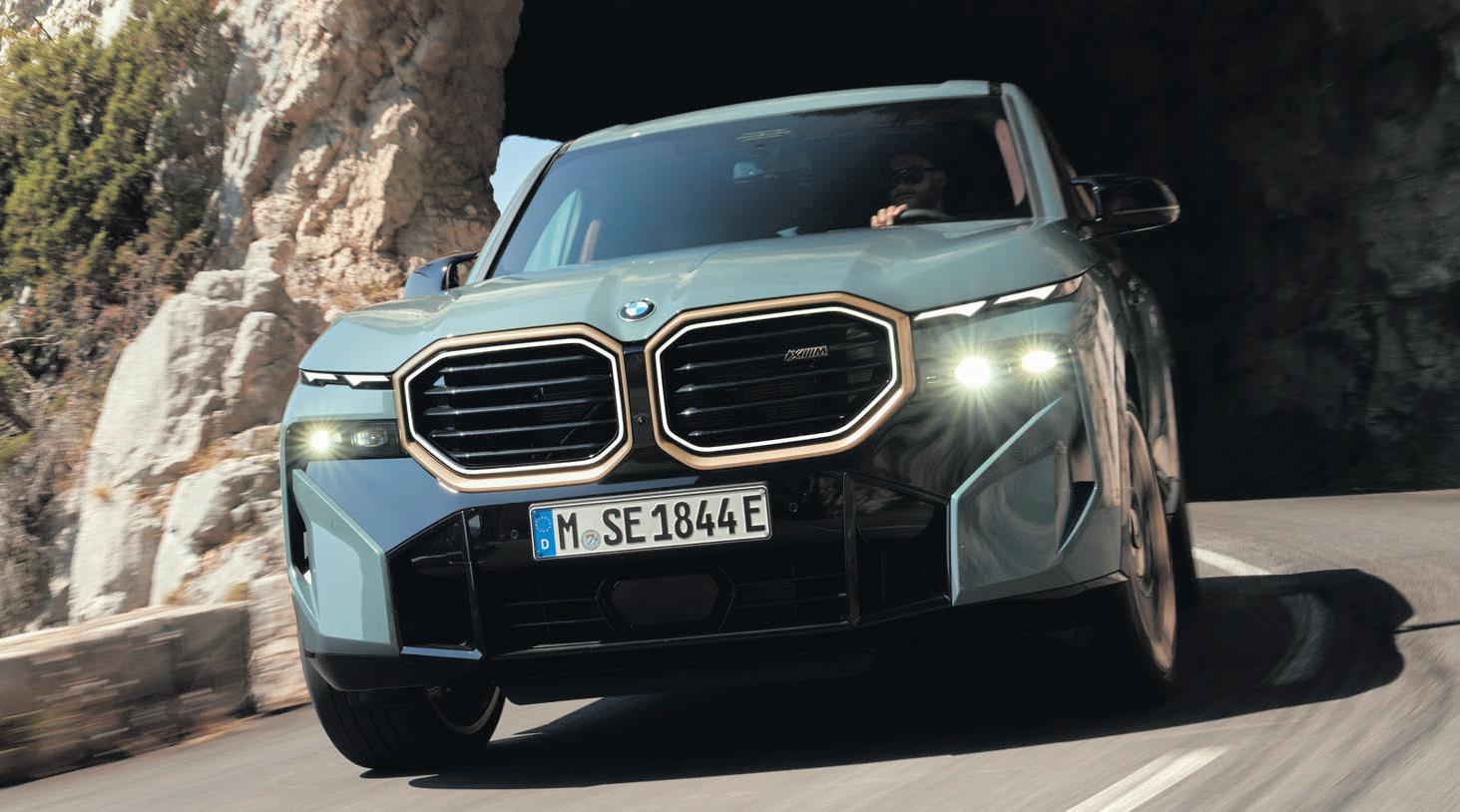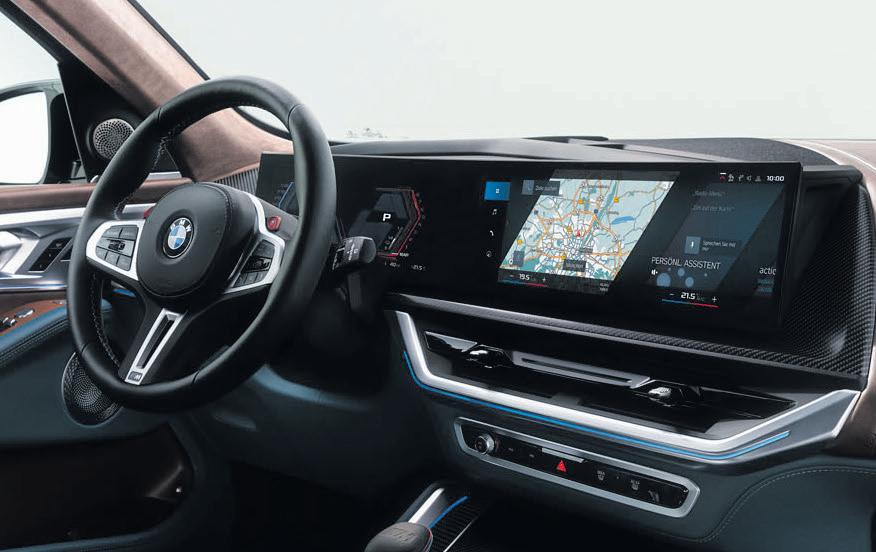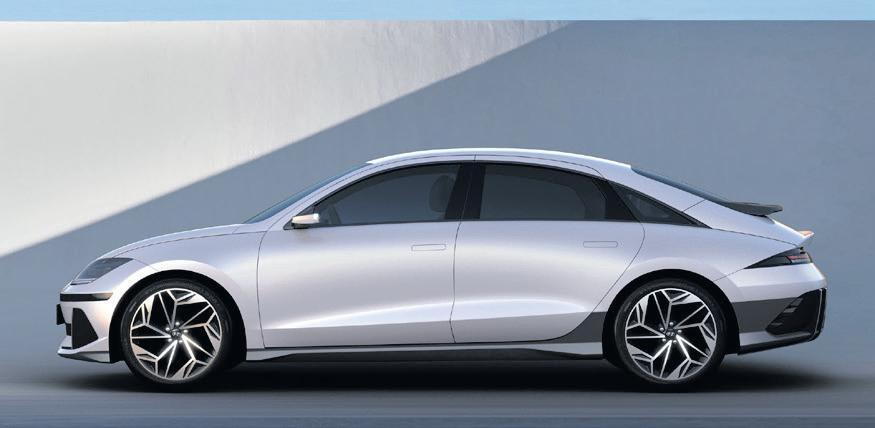
11 minute read
Motoring
The mid-sized E 350 Merc convertible combines sheer driving fun with long-range grand touring capacity 2022 MERCEDES-BENZ E 350 EQ CABRIOLET
By ALISTAIR KENNEDY
Mercedes-Benz has updated its E 350 sedan, coupe and convertible models with mild hybrid technology adding extra power, smoother engine response and lower fuel consumption.
Five variants are available: E 200, E 350 and AMG E53 with the coupe body plus E 350 and AMG E 53 convertibles. We’ve just spent a thoroughly enjoyable week behind the wheel and under the roof – only when we had to – of the E 350 Cabrio.
STYLING
The E-Class is the mid-sized model in the Mercedes-Benz passenger car range. The current Benz family styling has been adopted with a diamond patterned infll to the grille and the traditional three-pointed start in the centre. Headlights are Multibeam units with 84 individually controllable LEDs with adaptive high beam.
The wheels on the E 350 are 20-inch AMG multi-spoke alloys.
The optional Night Package adds some attractive exterior design elements.
Although most current convertibles come with solid roofs Mercedes has catered for the motoring purists by sticking with a traditional fabric roof.
There’s a wide range of body colour choices, nine of them standard or no-cost option colours available as well as two cost options. The standout to our eyes, and most who saw it, was the rich burgundy Rubellite Red in our test car.
Four fabric soft tops are available, we had the matching dark red.
INTERIOR
Obviously, as a twodoor, access to the rear seats is through the front doors, unless you’re young and agile enough to jump over when the top is down. Once seated there’s decent legroom although the passenger sitting behind the driver may occasionally need to compromise.
To cater for rear seat occupants the front doors are wide and need to be opened cautiously in tight parking spaces.
All Mercedes E 350 variants have leather upholstery with a choice of fve different colour combinations.
ENGINE / TRANSMISSION
All three E350 variants come with a 2.0-litre, four-cylinder turbopetrol engine generating 220kW of power and 400Nm of torque with a nine-speed automatic transmission sending power to the rear wheels.
The EQ Boost system uses a 48-volt integrated electric motor to add up to 10 kW and 150 Nm for short periods. Additionally, the system utilises high-effciency energy recuperation to supply power to the battery, making it possible to drive without the combustion engine. M-B describes this as “sailing”.
The E 350 sedan and coupe variants do the zero to 100 km/h sprint in 5.9 seconds with the convertible only marginally slower at 6.1 seconds.
SAFETY
Standard safety features across the E-Class coupe and cabriolet range include nine airbags, enhanced ABS brakes; electronic stability control program; acceleration skid control; active bonnet; tyre pressure warning; run-fat safety tyres; traffc sign assist; and a 360-degree camera.
Attention Assist uses a sensor and detailed algorithm to detect fatigued driving behaviour.
Driving Assistance Package Plus adds active distance assist; autonomous emergency braking; brake assist with cross-traffc function; lane keeping and lane assist; stop-and-go assist; blind spot monitoring; evasive steering assist and route-based speed adaptation.
Pre-Safe Plus helps prevent, or reduce the effect, or rear collisions crashes. If the car’s rear radar detects a potential rear-end collision, it rapidly fashes the rear hazard warning lights to alert the driver.
Specifc features in the E-Class convertibles include with head air bags in the doors and specifcally-designed roll-over protection.
A head-up display is available with the Vision Package option.
INFOTAINMENT
The Benz E250 uses the latest version of the company’s MBUX widescreen multimedia system.
Information is displayed on two 12.3inch high-resolution digital screens. In front of the driver is the digital instrument cluster with the central touchscreen providing access to the usual range of features including smartphone integration with Apple CarPlay and Android Auto; Bluetooth phone and audio; wireless smartphone charging; and embedded NTG6 satellite navigation.
Our test car had the optional Burmester premium sound system.
There’s also remote interactivity with other vehicle functions through the Mercedes ‘me Connect’ app.
DRIVING
At start up the central information screen displays the following warning, no doubt at the behest of the M-B legal team, ”Do not let the system distract you from the traffc situation”. While this clearly applies to every new car nowadays it’s even more relevant to the E-Class because there’s so much to learn before hitting the road.
There’s also a plethora of tiny controls on the chunky Nappa leather AMG steering wheel feels great
We couldn’t have picked better weather for our test and did a couple of open-air runs along our favourite route on the Central Coast hinterland. Opening and closing the roof takes around 15 seconds and can be done at speeds up to 30 km/h.
We escaped from Sydney’s urban jungle, including its numerous tunnels, with the roof closed and found the interior to be quite well insulated. Once the top was folded, we were able to activate the Aircap auto draught-stop and air scarf neck-level heating systems to reduce the effect of the outside elements. Although we didn’t need it, seat heating is available.
Fuel consumption is excellent, listed at 7.8 litres per 100 kilometres on the combined cycle. We averaged 8.2 L/100 km overall, managing just 6.4 L/100 km during our two rural grand touring cruises.
SUMMING UP
With so many SUVs on the road, all providing differing degrees of sensible and practical motoring it was an absolute delight to enjoy a really enjoyable driving experience with the Mercedes-Benz E 350 Cabriolet.
There’s suffcient interior space to almost qualify as a family vehicle although most of the time should be spent
out on the open road. It’s high comfort levels, smooth and powerful engine and excellent fuel economy make it an ideal long-distance grand tourer.


DISCOVER OUR RANGE, CARS FROM $11,990
AT A GLANCE MODEL RANGE
E 350 Sedan: $129,591 E 350 Coupe: $132,543 E 350 Cabriolet: $146,344
Note: These prices do not include government or dealer delivery charges. Contact your local Mercedes-Benz dealer for drive-away prices.
SPECIFICATIONS
(Mercedes-Benz E 350 2.0-litre turbopetrol Hybrid two-door cabriolet)
ENGINE:
Capacity: 1.991 litres Confguration: Four cylinders in line Maximum Power: 220 kW @ 5500 rpm Maximum Torque: 400 Nm @ 1800 rpm Fuel Type: Premium unleaded / electric Combined Fuel Cycle (ADR 81/02): 7.8 L/100km
CO2 Emissions: 177 g/km


Huge grille has become a big feature of all recent BMWs FIRST-EVER BMW XM

By EWAN KENNEDY
The frst-ever BMW XM will be launched in Australia in the frst half of 2023.
It is powered by an electrifed drive system. The M Hybrid drive system has an overall system output of 480kW using a combustion engine and an electric drive system.
The extensively updated V8 engine features a cross-bank exhaust manifold, reinforced crankshaft drive and optimised oil separation process to deliver an optimum balance of power and effciency.
The engine is assisted by an electric motor integrated into the eightspeed M Steptronic transmission.
The motor’s power is instantly on tap when pulling away, delivering unhesitating response to every movement of the accelerator.
The M Hybrid drive system produces maximum overall torque of 800Nm, with a pre-gearing stage increasing the electric motor’s effective maximum torque to 450Nm at the transmission input.
The BMW XM accelerates from zero to three operating modes, including an Electric setting for cruising with zero emissions at speeds of up to 140km/h and over a maximum distance of 82 to 88 km in the WLTP cycle.
A lithium-ion high-

100km/h in 4.3 seconds. Interestingly, it has what BMW calls an ‘energycharged soundtrack’. This originates from its sports exhaust system with electronically controlled, continuously adjustable faps and hexagonal dual tailpipes arranged one above the other for the frst time on a BMW M model.
The M Hybrid button on the centre console is used to select one of voltage battery is mounted in the car’s underbody and the 25.7kWh of usable energy it provides.
The Combined Charging Unit in the BMW XM enables AC charging at up to 7.4kW.
Fascinatingly, the BMW IconicSounds Electric was developed in a collaboration between the BMW Group and flm score composer Hans Zimmer.
Smooth shape of the Ioniq 6 certainly give it a streamlined look IONIQ TRICKS

By CHRIS RILEY
The gloves have come off with a warning that Hyundai wants to build the EV with the longest range in the world.
This follows news the company’s forthcoming Ioniq 6 electrifed streamliner will have an impressive range of 614km (WLTP). It’s not quite the best in Australia, but not far off.
Ioniq 6 is no highriding SUV, rather an extremely long, low curvaceous sedan with inherent aerodynamic advantages.
In fact, with a drag coeffcient of 0.21 Cd, it’s even slipperier and more aerodynamic than the $300K plus Mercedes-AMG EQS 35 4MATIC (0.23 Cd).
A claimed electric range of 614km puts the Ioniq third in terms of range of EVs currently for sale in Australia. It cowtows only to the Tesla Model S (652km) and the BMW iX (630km), but for how long?
“From the start of Ioniq 6’s development, we set our sights on making it the leading all-electric range EV,” Head of SubMid Project Management Centre, Jae Ho Huh, said.
Ioniq 6 will be offered in two grades, 168kW/350Nm rearwheel-drive and 239kW/605Nm allwheel-drive, both powered by a 77.4kWh battery array.
Hyundai says the Ioniq’s long range comes in large part from its dedicated Electric Global Modular Platform (E-GMP), together with the electrifed streamliner’s ultra-low wind resistance.
The platform is shared with the Kia EV6 and Genesis GV60.
Various design elements, such as an active air fap, wheel air curtains, integrated rear spoiler and wheel gap reducers, help to signifcantly enhance aerodynamic performance, placing it among the sleekest vehicles worldwide.
In particular, wheel gap reducers minimise the empty space between the front bumper and tyres to improve aerodynamic performance around the wheel wells.
Hyundai says this invention made it possible for the electrifed streamliner to provide a longer wheelbase for passengers’ riding comfort while simultaneously overcoming the aerodynamics challenges caused by its short front overhang.
It should be pointed out however that the fgure of 614km is achieved with 18-inch wheels ftted and presumably hard, low roll resistance rubber.
The same car with 20inch wheels is good for 545km -- 69km less.
Ioniq’s energy consumption is a claimed 13.9 kWh/100km.
E-GMP delivers optimal electric performance and provides 800V ultrafast charging from 10 to 80 percent in just 18 minutes and supports 400V charging without the need for additional components or adapters.
Hyundai says having a platform specifcally designed for EVs also means Hyundai Motor is better able to design vehicles to best meet passengers’ needs. With E-GMP, Ioniq 6 can be a workstation or a portable power bank on wheels, creating new usage scenarios to ft customers’ diverse, onthe-go lifestyles.
“We put every effort into designing the most effcient car in the EV segment,” Head of Total Vehicle Performance Development Centre, Byung Hoon Min, said.
Ioniq 6 is expected in Australia next year, priced from $70,000.
With the VH series, released in June 1971, Chrysler at last gave Valiant buyers a uniquely Australian design. The new model was wider than the previous (VG) model and with its extended wheelbase it looked enormous, despite the fact that, at 4900 mm, it was only a fraction longer than before.
The VH Valiant’s cleaner and more rounded lines were enhanced by a reduction in body decoration. The front parking lights and turning indicator
CHRYSLER VALIANT VH
1971 Chrysler Valiant VH Regal 770

lights were moulded to ft fushly above a curved front bumper bar. A hatch-type bonnet was ftted and a completely new interior complemented the revamped body.
VH buyers were offered two new versions of the much-publicised Hemi engine These were the 265, a 4.3-litre ‘twobarrel’ engine producing 152 kW, and a 162-kW version of the same engine ftted to the Pacer sports sedan.
Production of the 4-litre ‘245’ and 3.53-litre ‘215’ continued. The 5.2-litre V-8 was retained as an option on the Regal models.
The medium-line VH Valiant was called the Ranger; the better equipped version became the Valiant Ranger XL. The VH wagon, which was about 152 mm longer than the sedan, featured a massive load space and an integral airdefector above the rear window.
The prestige Valiant was now the VH Regal. A Regal 770, with a stronger sporting accent, was also available.
The line-up broadened as the year progressed. Chrysler introduced the sensational Charger in August and the ‘Chrysler’ saloon in November.
The other variant for 1971 was the two-door Valiant VH Hardtop released in October. Available in Regal and Regal 770 form, it was about 100 mm longer than the VH sedan – and it looked to be all boot. If was a spectacular sales fop; virtually everyone preferred the Charger.
Including Chrysler saloons and Charger models, 67,800 VH Valiants were made.






